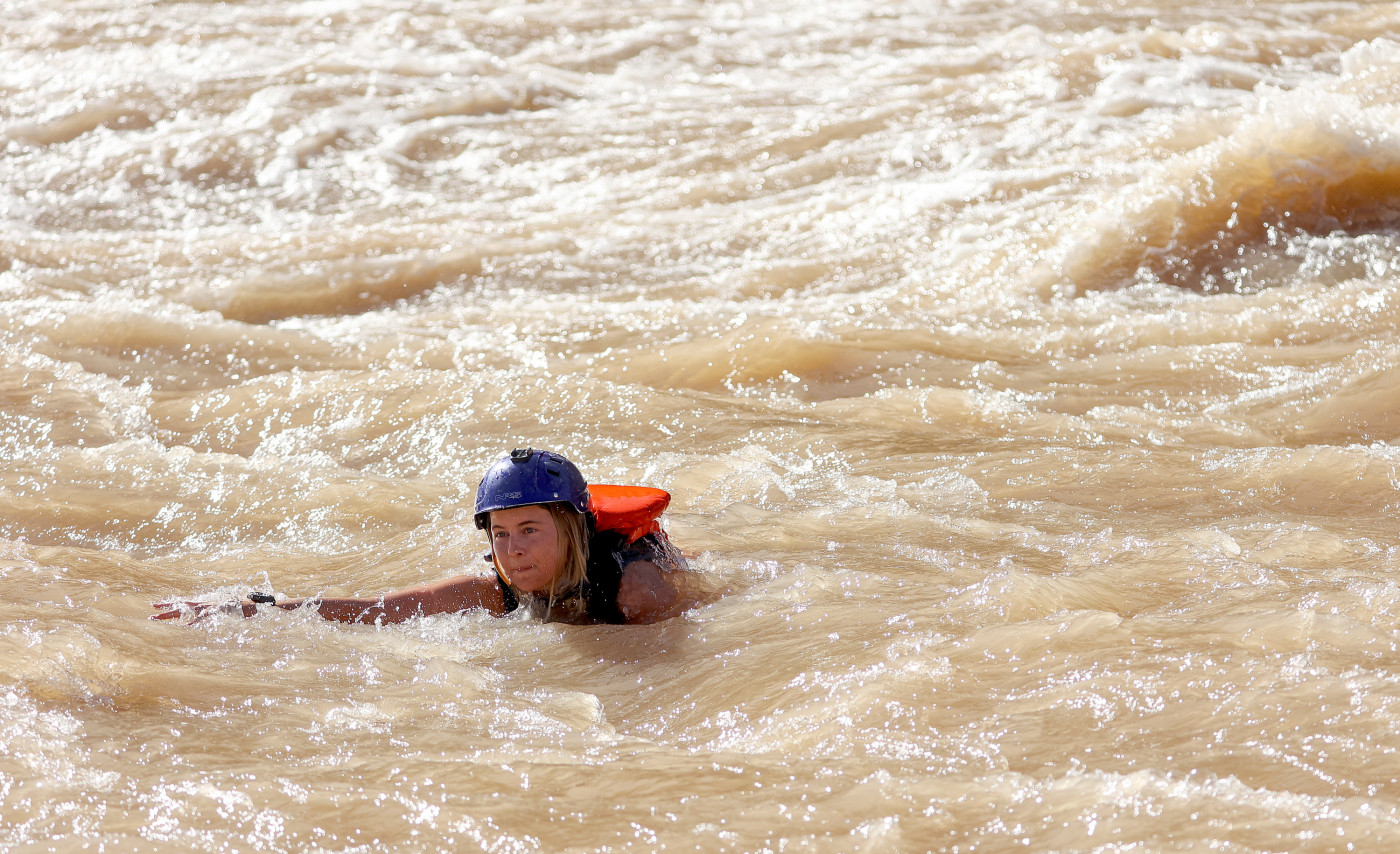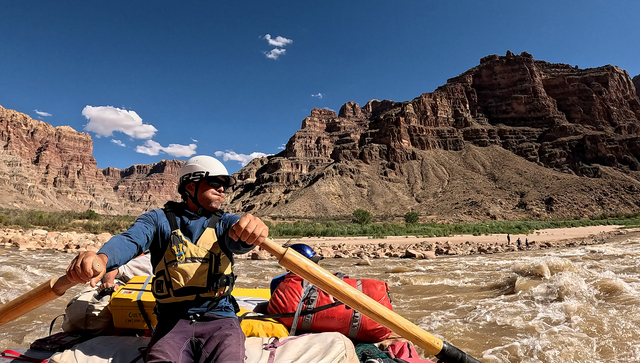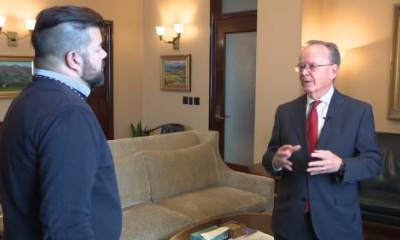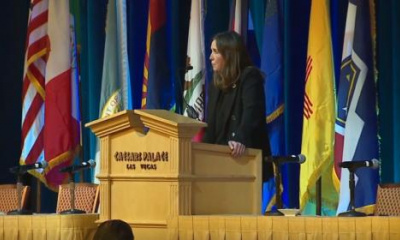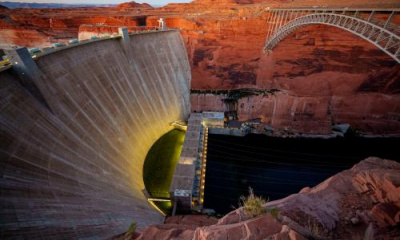Returning Rapid’s Mike Dehoff likens the river to a friend who is sick in the hospital ― and its symptoms are worsening
As I hopped onto a raft, surrounded by deep red, rugged river canyons, submitting myself to six days of rafting down a river with complete strangers and no service, panic that I would be able to give the Colorado River the justice and attention it deserved began to settle in.
Considered the lifeline of the West, the river never crossed my mind until this assignment. An Oklahoma native, I didn’t reap the benefits of the Colorado River until moving to Utah five years ago. I didn’t fully grasp those benefits — and how much I took the water source for granted — until I was in a life jacket and helmet, riding its rapids with people who have devoted their careers to its survival.
As a journalist, I get to be a fly on the wall in circumstances I would have never encountered otherwise. I recently found myself on assignment rafting 97 miles of the Colorado River for six days with journalists, scientists, philanthropists and river experts. Coming from different backgrounds and with different experience levels, my raftmates shared one thing in common — they care about what becomes of the Colorado River.
Mike DeHoff, Returning Rapids principal investigator, navigates Gypsum Canyon rapid in Cataract Canyon on the Colorado River on Friday, Sept. 20, 2024. | Kristin Murphy, Deseret News
Mike DeHoff, a seasoned river runner and principal investigator for the nonprofit Returning Rapids in Moab, Utah, organized the trip to share the changing Colorado River landscape. Originally started by a group of local river enthusiasts, including DeHoff, the Returning Rapids project has grown into a scientific and conservation-oriented effort researching the Colorado.
When asked about the future effects of sediment on the Colorado River, Floyd Dominy, commissioner of the U.S. Bureau of Reclamation in 1963, who was responsible for the Glen Canyon Dam and the creation of Lake Powell, replied, “We will let people worry about it in the future.”
“The impacts of having Glen Canyon Dam and the reservoir, they’re not over. They’re still ongoing,” DeHoff said. “And what does that look like? How do we grapple with them? Where do we address those impacts?”
Sixty-one years later, on a muddy beach along the 41-mile stretch of Cataract Canyon, DeHoff pleaded that we not share Dominy’s sentiment.
“In the Reclamation Act, Colorado River Storage Project Act, the founding legislation of Glen Canyon NRA, the word sediment isn’t mentioned at all,” he said. “So to bring this to light for collectively, all of us who depend on the Colorado River to think about our great-grandchildren — or something like it — is something that we need to start really thinking about what that looks like, and where do we go with it.”

Meg Flynn, Returning Rapids researcher, and Cheyenne Klemme, Returning Rapids guide, react to successfully navigating Big Drop 3 in Cataract Canyon on the Colorado River on Thursday, Sept. 19, 2024. | Kristin Murphy, Deseret News
Rapids returned to Cataract Canyon
Before the dam, “100 million tons a year of sand, silk and clay were coming into Yuma, (Arizona) and it was a biologically diverse place,” Jack Schmidt, the Janet Quinney Lawson chair in Colorado River Studies at USU and the director of the Center for Colorado River Studies, told the Deseret News.
“Essentially, no sediment gets down there,” now that the dam blocks it from continuing down its natural route,” he added. With declining water levels over the years, exposed river sections that have become suffocated by sediment since the construction of the Glen Canyon Dam are reemerging.
When Lake Powell was filled in the 1980s, it inundated “25 miles of Cataract Canyon’s 41-mile river corridor,” OARS reported. “Those 25 miles of the river contained about thirty rapids. ... One of the largest of these side canyons is Gypsum,” where decades later, Gypsum Rapid has returned.
Classified as a level 4 out of six levels, Gypsum Rapid lived up to the rumors about it decades ago. It was no longer a mild ripple in the river like it had been just a season earlier; it was a wild, whitewater rapid.
As we approached the head of the rapid, the guides parked the rafts and hiked down the side of the river to examine how best to execute Gypsum. DeHoff and his wife Meg were the only ones on the trip who had actually seen the rapid since its re-emergence. For about 30 minutes, they shared advice and excitement about how best to go down — leaving the rest of us to sit in our anticipation, scouting out what was best to hold on to so that we didn’t end up a swimmer in the white water.

A group of river experts, scientists, water rights lawyers, tribal representatives, nonprofit representatives, philanthropists and river guides camp with Returning Rapids Project next to Gypsum Canyon rapid in Cataract Canyon on Saturday, Sept. 21, 2024. The Gypsum Canyon rapid only recently reemerged after being under the flat water of Lake Powell for decades. | Kristin Murphy, Deseret News
We were about to raft rapids that hadn’t seen the surface in nearly 50 years.
After each of the seven rafts, operated with precision by the river guides, executed the rapid with no swimmers, the brave and the peer-pressured swam the bottom half of the rapid like a natural water slide.
I’d call myself an adrenaline seeker, be it from cliff jumping, skiing or white water rafting, for that matter, but swimming the rapid that the river guides had just spent so long examining to ensure we don’t tip, get stuck or fall out, took some extra faith.
For the majority of us that did it, we were given instructions — on how to not be swept away to our demise — to float on our backs for the first half and then to flip over and freestyle swim hard and fast to the shore. I think I asked for those instructions to be repeated three times before I had the courage to do it.
Worth it.
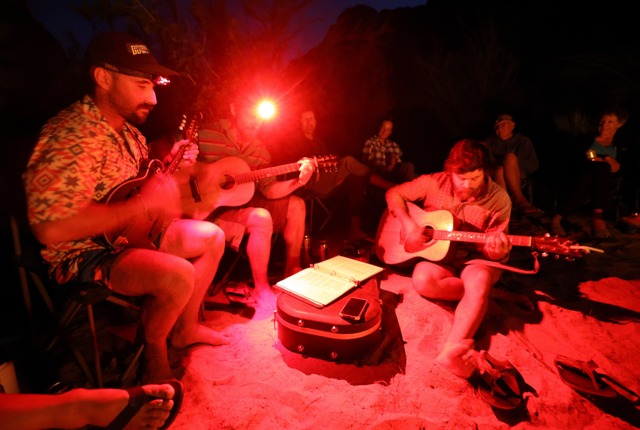
Davide Ippolito, Returning Rapids researcher and OARS river guide, Peter Lefebvre, Returning Rapids researcher and OARS river guide, and Levi Jamison, guest river guide, play music during a six-day Colorado River trip through Cataract Canyon with the Returning Rapids Project on Thursday, Sept. 19, 2024. | Kristin Murphy, Deseret News
The Colorado River: More than recreation
Prior to the trip, I saw the Colorado River and the national parks and recreation areas it flows through solely for recreational purposes — world-class rafting, hiking, sightseeing, etc. I never considered its Indigenous history, ecosystem, or the fact that it’s a water source for more than 40 million Americans.
Without pointing the finger, I think many people view it with the same amount of entitlement. As long as the faucet has good water pressure, what’s there to worry about?
But recreation and municipal use isn’t even the tip of the iceberg. Nearly 80% of Colorado River water is used for agricultural purposes; California’s Imperial and Coachella valleys and Arizona’s Yuma Valley depend heavily on the river for irrigation, which delivers produce consumed by millions of Americans.
At the end of the trip, sitting around the campfire, Schmidt leaned over and told me that although millions depend on the Colorado River, only about 300 people worldwide care about it, and 27 of them were sitting around the campfire with me.
Given the many human-induced pressures the Colorado River has endured, it deserves a greater number of dedicated stewards.

